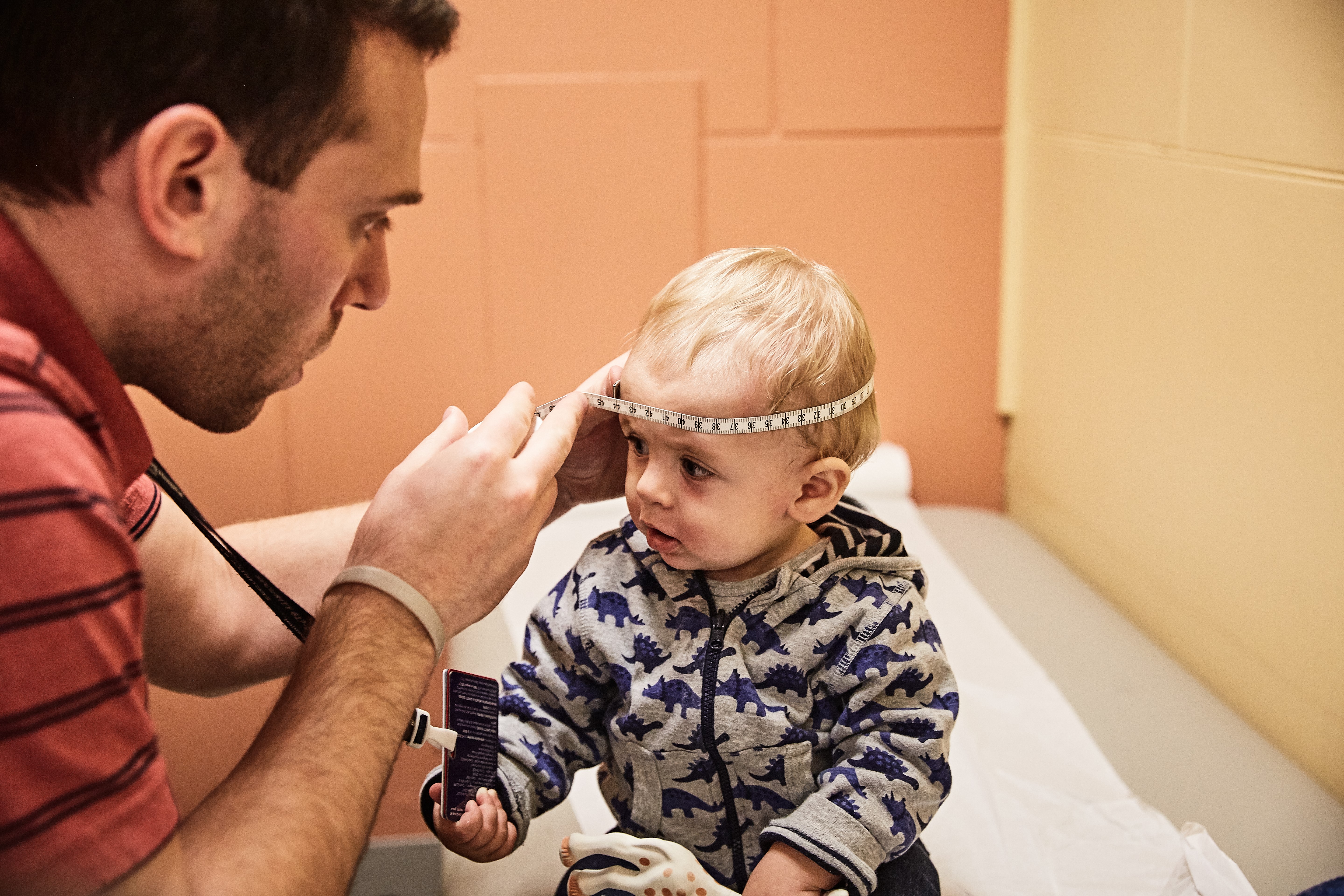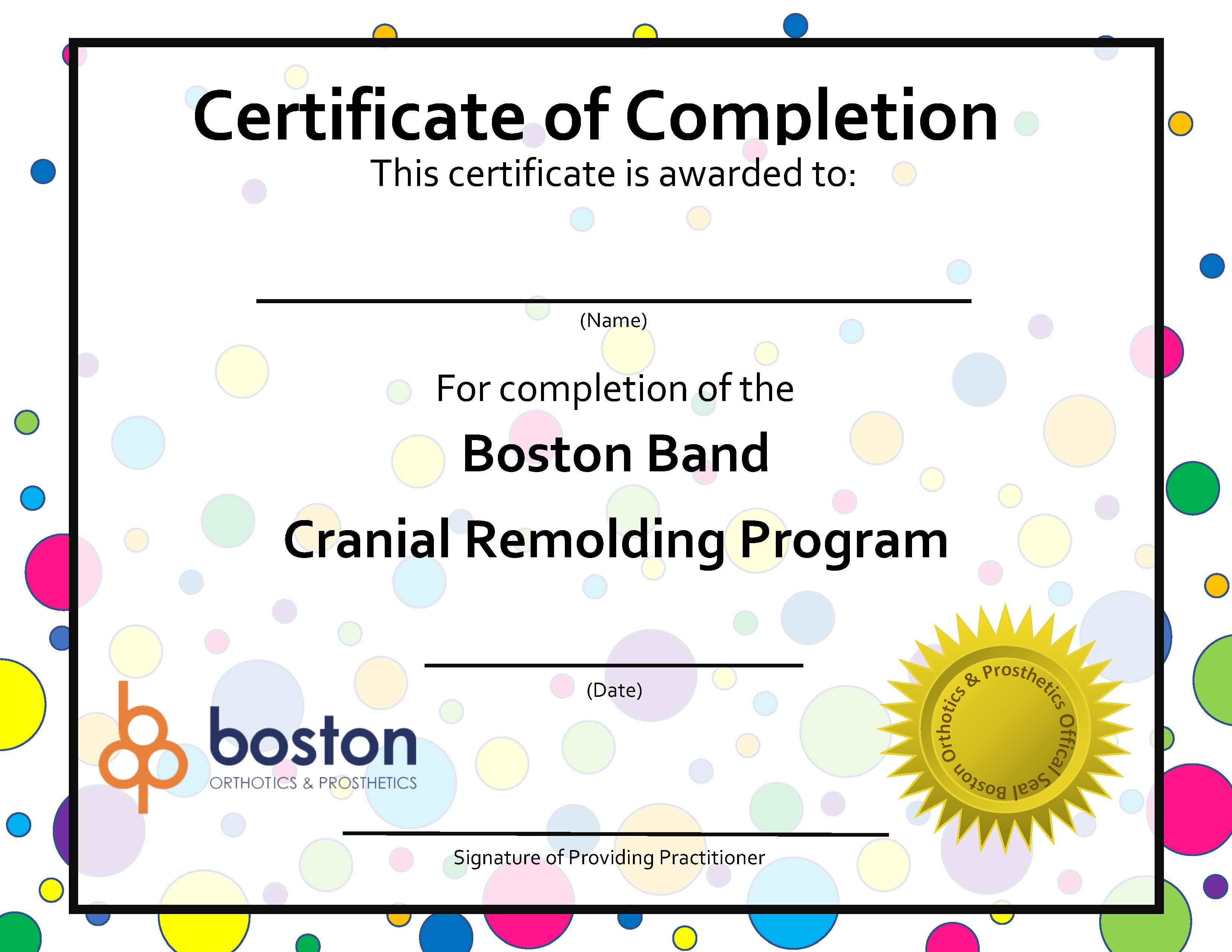What to Expect After a Plagiocephaly Diagnosis
When your baby has been diagnosed with plagiocephaly, or “flat-head syndrome,” it’s natural to have a lot of questions, as well as worries or concerns. At Boston Orthotics & Prosthetics, we treat hundreds of infants for plagiocephaly every year, and we can tell you there is nothing to worry about! Of course, it helps to have a good idea of what the process will involve. With the help of one of our lead cranial experts, Laura Norville, CO, we offer a brief summary of what to expect after your child has been diagnosed with plagiocephaly or brachycephaly.
The First Appointment
 If your baby has been diagnosed with plagiocephaly (flattening of one side of the head) or brachycephaly (flattening of the back of the head) and you have been referred to Boston O&P, your Boston O&P orthotist will do an initial evaluation, take measurements, and, if appropriate, take a 3D scan of your baby’s head.
If your baby has been diagnosed with plagiocephaly (flattening of one side of the head) or brachycephaly (flattening of the back of the head) and you have been referred to Boston O&P, your Boston O&P orthotist will do an initial evaluation, take measurements, and, if appropriate, take a 3D scan of your baby’s head.
Your orthotist will tell you the measurements and explain what they mean. If a Boston Band is not appropriate for your baby’s particular case, your clinician may recommend repositioning right, repositioning left, using the Perfect Noggin for sleeping, and tummy time.
If the Boston Band is recommended, you will receive an estimate for how long your child will need to wear the helmet and what results you can expect. How long your child may need to wear the Boston Band depends on how flat the head is and the amount of growth remaining.
Your orthotist will discuss their recommendations with you and will be available to answer any questions you may have.
The Fitting
Approximately two weeks after your first appointment you will return for a fitting of the Boston Band that has been custom-made for your child. The orthotist will fit the Boston Band and make any required adjustments to fit the baby’s head.
You will receive instructions about the break-in schedule, skin care, cleaning, etc., and you will practice putting the helmet on your child and taking it off. The fit appointment is usually 60-90 minutes long.
How the Boston Band Works
The Boston Band is designed as a mold that provides space for the flat areas of your baby’s head to grow into a more round and/or symmetrical shape. As your child continues to wear the Boston Band, the head will be gradually reshaped to improve the flattening.
Adjusting to the Boston Band
Children adapt easily to helmets, but they do need a short break-in period to ensure that the Boston Band is fitting well and to get used to wearing it. Typically, the break-in period is 3 days.
The Boston Band Wear Schedule
 To start the break-in period, have your child wear the Boston Band for 1 hour. After the hour, remove the band for 30 minutes and check the skin, then put the helmet on for another 2 hours, then remove for 30 minutes, then on again for 3 hours, then off for 30 minutes. The helmet can be removed for sleep.
To start the break-in period, have your child wear the Boston Band for 1 hour. After the hour, remove the band for 30 minutes and check the skin, then put the helmet on for another 2 hours, then remove for 30 minutes, then on again for 3 hours, then off for 30 minutes. The helmet can be removed for sleep.
On day two, the helmet should be on for 4 hours, off for 30 minutes, on for 5 hours, off for 30 minutes. The helmet can be on or off for sleep on the second day.
On the third day, the helmet should be kept on for 6 hours at a time, with 30 minute breaks in between. The helmet should be worn for sleep.
After the break-in period, your child will wear the Boston Band for 23 hours a day. You should remove the Boston Band once in the morning and once in the evening, but it should be off for no more than 1 hour per day.
When to Remove the Boston Band
There are some exceptions to the 23-hour daily wear schedule. You should remove the Boston Band if your child’s skin has redness or irritation that will not go away, if the child has a fever, and during physical therapy.
The Boston Band and the Heat
If your baby is wearing the Boston Band in hot weather and seems to be uncomfortable, you may remove the Boston Band until the baby cools down or is in a cooler location. Be sure not to overdress your child in hot weather to avoid overheating!
Sleeping with the Boston Band
After a couple days of adjustment, your child should be able to sleep comfortably in any position while wearing the Boston Band.
The Boston Band and Your Child’s Skin
You should check your child’s skin every time you remove the Boston Band. Your child’s skin may be slightly red, with pink spots along the cheeks and the back of the neck. This is very common and should improve as the child’s skin adapts to the Boston Band. Any irritation or redness should go away within 30 minutes.
If redness is still present after the 30 minute break, leave the Boston Band off until the skin is back to normal. If the redness does not go away or the skin seems to be severely irritated or excessively dry, keep the Boston Band off and immediately contact the office to schedule an appointment or to discuss the issue with your orthotist.
The Boston Band and Bathing
The Boston Band should be removed for baths, and you should clean your child’s head once a day, as well as after swimming. Wash your child’s head with mild baby shampoo. Make sure the shampoo is thoroughly rinsed out of your baby’s hair, and put the Boston Band back on when both your child’s hair and the helmet are fully dry.
Cleaning the Boston Band
The Boston Band should be cleaned every day to help prevent any unpleasant odors or extreme discoloration due to a buildup of sweat or skin cells. Some discoloration is normal over time and should not be a cause for concern.
To clean the Boston Band, gently wipe the inside of the helmet using a clean, soft cloth with baby shampoo and water. Repeat with just the cloth and water to ensure any soap residue is removed. Allow the Boston Band to air dry; do not use a hair dryer or other heat source.
At least once a week, disinfect the Boston Band by gently wiping the inside with 70% isopropyl alcohol using a soft, clean cloth. Allow the alcohol to evaporate, wipe again with just water, then allow to air dry. You can also use cornstarch baby powder to absorb any odors.
Follow-Up Appointments
You will bring your child to follow-up appointments every 2 to 4 weeks until the completion of treatment. It is important to always wear the Boston Band at least 20 minutes prior to your appointment. This will help your orthotist to evaluate the fit of the helmet and identify any irritation being caused by the helmet.
Discharge Appointment
At each visit, your orthotist will take measurements and evaluate the baby's head shape. Once it has reached a good shape, or it is decided to end treatment for other reasons, a final 3D scan will be taken to show the progress made while wearing the Boston Band. Babies will receive a graduation certificate showing they have completed the treatment.

Frequently Asked Questions About the Boston Band and Plagiocephaly
Does the Boston Band hurt them? Your child might need some time to get used to wearing the helmet, but it should not cause them any pain or serious discomfort.
How long will my child have to wear the Boston Band? It depends on several factors, including the amount of shape correction needed and the amount of head growth remaining. In general, children who begin wearing the Boston Band at 3-6 months of age will need to wear the Boston Band for 10-14 weeks.
Can they wear it in the car seat? Yes, as long as the helmet fits correctly it can be worn in the car seat.
Will their head still grow? Yes, your baby’s head will continue to grow while using the Boston Band. In fact, the continued growth of the head is what enables the Boston Band to gently mold your baby’s head into a normal, rounded shape.
Will my baby sleep OK in the plagio helmet? Yes, after a brief adjustment period, your child should be able to sleep comfortably in any position while wearing the Boston Band.
Will the Boston Band smell and how do we clean it? Daily cleaning can help prevent any unpleasant odors. See the Cleaning the Boston band section above for specific cleaning instructions.
Will the Boston Band bother my baby’s eczema? Can we still use ointment? Your clinician will do their best to keep the helmet from exacerbating any areas of eczema. Ointments can usually still be used, but be sure you give the ointment time to soak in before putting on the helmet. In some cases, the helmet keeps the baby from scratching their skin and the eczema actually improves.
Is the Boston Band heavy? No. The Boston Band is a lightweight helmet designed to be easy on a baby’s neck muscles. A Boston Band typically weighs about 9 ounces.
Will it work/how much correction can we get? Typically the flattening is much improved after treatment with the Boston Band. The amount of correction will depend on the baby's age, how soft their skull is, and how much they grow during the treatment.
Plagiocephaly Resources for Parents
If you need more information about plagiocephaly, here are some helpful links:

